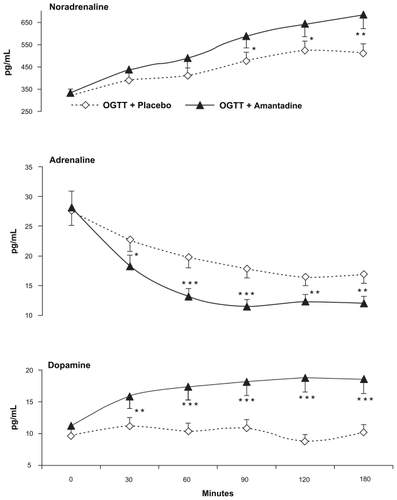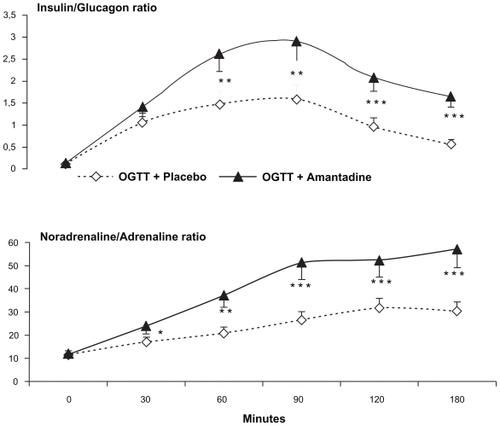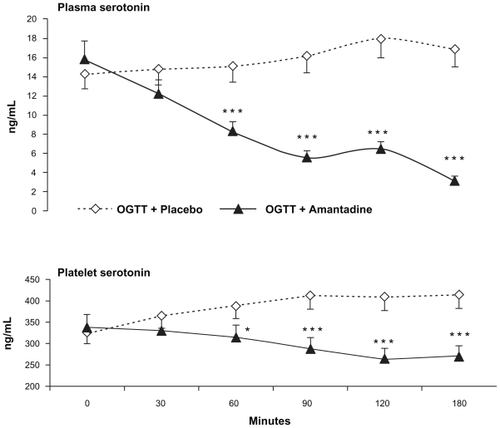Figures & data
Table 1 Correlations found during the oral glucose tolerance + placebo test performed in 15 normal voluntary human (seven males and eight females)
Table 2 Correlations found during the oral glucose tolerance + amantadine test performed in 15 normal voluntary human (seven males and eight females)
Table 3 Changes in SBP, DBP, and HR induced in 15 normal voluntary healthy humans (eight males and seven females) when one OGTT plus placebo and one OGTT plus amantadine tests were carried out two weeks apart
Figure 1 The addition of an oral dose of amantadine (100 mg) to an oral glucose load potentiated both the glucose and glucagon reductions and increased postprandial insulin levels in 15 normal healthy subjects (seven males and eight females), whose ages ranged from 25 to 58 years (mean ± SEM = 38.4 ± 7.2).
Abbreviation: SEM, standard error of mean.

Figure 2 The addition of an oral dose of amantadine (100 mg) to an oral glucose load enhanced the normal noradrenaline and dopamine rises, always observed throughout the OGTT + placebo test. Conversely, maximal reduction of adrenaline opposed the former rises.
Abbreviations: OGTT, oral glucose tolerance test; SEM, standard error of mean.

Figure 3 The insulin/glucagon ratio as well as the noradrenaline/adrenaline ratio showed paralleled increases throughout the oral glucose tolerance test when 100 mg of oral amantadine was given to 15 normal healthy subjects (seven males and eight females), whose ages ranged from 25 to 58 years (mean ± SEM = 38.4 ± 7.2).
Abbreviation: SEM, standard error of mean.

Figure 4 Both platelet serotonin (p5-HT) and plasma serotonin (f5-HT) showed maximal decreases throughout the test when an oral dose of amantadine (100 mg) was added to an oral glucose load. These findings contrast with the significant rises of both parameters observed throughout the oral glucose load + placebo challenge.
Abbreviation: SEM, standard error of mean.
